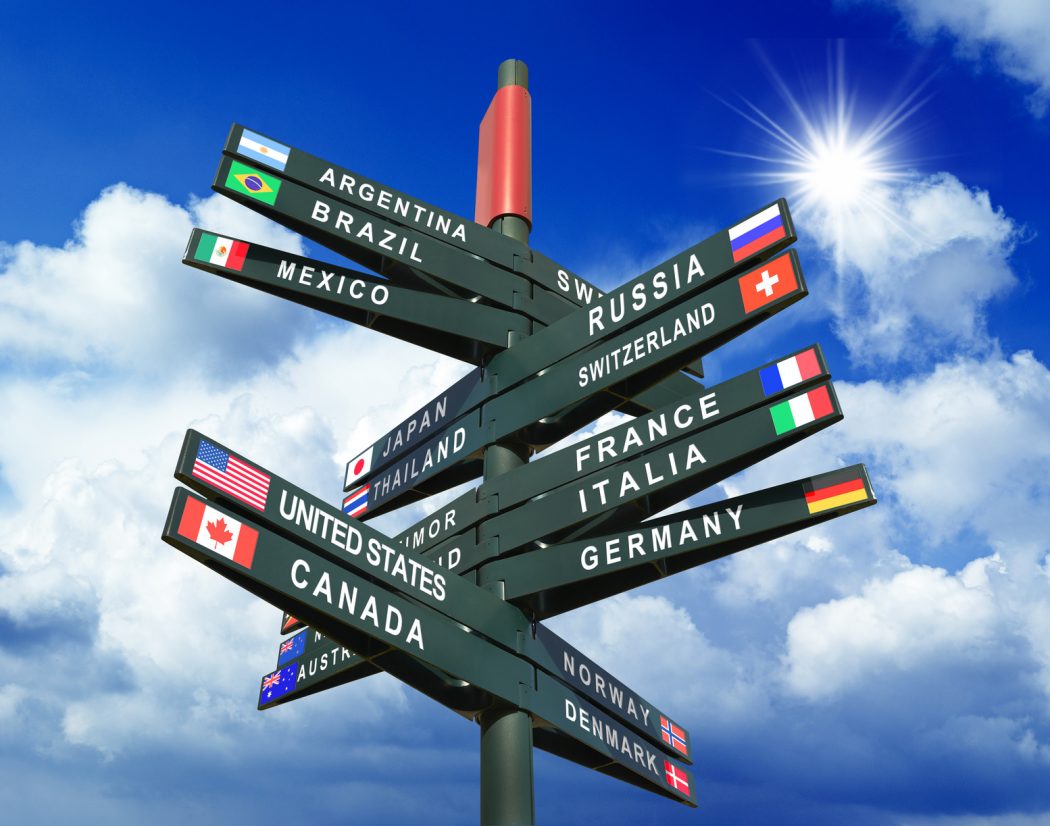The German salesman was young, bright and personable. His presentation was tight and effective, and the sceptical, though polite, group of Australians began to warm up to his product.
But it all went off the rails at question time; the salesman glossed over the answers, or clearly misunderstood the questions. His problem, he said later, was that he was baffled by the Australian drawl. And, he eventually revealed, he’d assumed Australians were an easy sell, so he hadn’t done his homework properly. The Australians shook his hand and closed the meeting.
No sale.
These days, it’s a rare businessperson who blunders into China thinking that they’ll be doing business the way they do it at home. But the world is still a complex place, where there are import regulations, distribution channels, and language problems to grapple with. Yet, assuming that you’ve got a decent product and have done the spade work, there are ways to maximise your chances of making it overseas—and there are good reasons why you should try. After all, that’s where people with high value currencies live.
Success begins with some basic principles.
Speak their language
aussieBum is a maker of swimwear that gets more than 1,000 orders a day over the Internet, most of them international. Worth more than $30 million, the brand has been built without massive advertising and marketing spending, because founder Sean Ashby hit on a neat way to build relationships with his overseas customers: he recruited a diverse a set of people as possible, and then let them loose. “Everyone who started in the company started packing, because that was all we could afford,” says Ashby. But when they’re not packing, staff – no matter how junior – are empowered to make deals with customers. “A person who is packing today will crunch a deal tonight with a German who can’t speak English.”
Ashby emphasises building relationships with customers, at every opportunity. “When somebody orders from us and gets their confirmation, there’s always a paragraph that says we appreciate your feedback,” says Ashby. “Some people then launch into quite detailed responses.” Sometimes, says Ashby, they offer very pointed comments and opinions about what’s working and what’s not.
The comments are taken so seriously, they sometimes result in new products. And having so many engaged international customers adds another language resource to the company. “Even with translators in house, you still need to use someone in that country who is up to date with local slang,” says Ashby.
So the company sometimes runs marketing material past customers in the relevant countries. Getting the translation right on the website is crucial. “The majority of people contact us because they see we do business in their language,” says Ashby. “You have to demonstrate that you respect them as a country and are prepared to communicate with them on their own terms.”
Once the company gets a critical mass of response from a particular market, department stores often then show an interest. “We had enough people going into department stores that it was brought to the attention of the buyers who are looking for exclusive products,” says Ashby. “That meant we could cut out a lot of the fluff, like fashion parades and Champagne cliques.”
Another piece of Ashby advice is not to reinvent yourself for different markets, which is why aussieBum remains resolutely Australian in tone and image. The only time he suggests changing is if a word or phrase won’t translate. “In Australia, we use the byline ‘if in doubt, wear something else’, but it doesn’t wear as well in French.”
The art of going online
Anurag Chakradhar of online marketing and portal creation firm ThinkUnthinkable says Internet selling is only useful if you don’t fall into the trap of believing that international businesses are built on great ideas.
“To me, ideas are a dime a dozen. It’s how you implement it and whether you can get critical numbers in terms of traffic,” he says. Chakradhar also says it’s hard to build a major web business on the cheap. “The most common mistake is not wanting to pay for useability testing and focus groups,” he says, arguing it’s vital to see how people actually use the site. “The later you do testing the more money you spend, but the less chance you have to improve the project.”
If you’re aiming at an overseas market where testing is more difficult, Chakradhar suggests making the site simple. “Look at Amazon – they start simple, hand-hold their audience and then make it more advanced. You have to know your audience.”
Chakradhar says keeping it simple will also let you use a content management structure that will let you show different texts, depending on who’s looking at it. “You just give your provider text files in different languages.”
The more complex the product, obviously the more complex the site needs to be. “If you are selling groceries, there might be key differences in the way different countries categorise things, so you need to look at local examples,” he advises. “Again, Amazon works internationally because it has a simple product.”
Once you’re clear about what you want, there’s no reason not to do some global business of your own. Outsource your site construction to programmers in India or eastern Europe, who you can find through websites like Upwork. “Do all of your documentation locally, including your site maps, your wire frames and your spec documents” says Chakradhar, because the more you specify the end result, the bigger chance you have of getting the site you envisaged. Also insist on using professional project management software, rather than relying on emails. “Assign tasks and it can track what tasks have been assigned and completed.”
But don’t outsource the design. “Design is a reflection of your state of mind and your sense of what looks good and what doesn’t,” he says. “In my experience, design should be kept in the same country so you capture your own sensibilities. ”
Of course, the Internet is not a suitable vehicle for all types of export businesses. Sometimes you just have to get out there and knock on doors—especially to find that all-important distributor.
Pounding the airways
If you want to conquer the world, expect to spend a lot of time in airports. “I travel overseas at least every six weeks,” says Victoria Angove, international business development manager for Angove’s, whose wines are sold in more than 30 markets.
Because Angove’s is more than a century old, Angove says she thinks for the long term, which means hanging back from a market until the right relationships are in place. She says finding a distributor can be as simple as going and introducing yourself, though it may take many months of negotiation after that. One tip she says is to find a distributor who handles products similar to yours and approach them. Angove says that if she sees a particular group of wines internationally, she knows it’s an indication that there is a good distributor at work who should be approached.
Once relationships have been set up within a market, it’s important to keep returning for a business review. “Although we have an agent to represent us, we go into the market and look at other competitive brands, price positioning, shelf positioning and that kind of thing. That means that we’re taking advantage of market potential that I can see, where they can’t because they’re too close to it.”
Angove says she’s seen people come a cropper with the wrong approach. “Australians have an unusual sense of humour that’s very irreverent, that’s not understood in Asia,” adding that it’s a major mistake is to believe that other English speaking nations share the same values. “Australians are comfortable talking about sex, but in America you do not do that.”
Angove’s, of course, is a multi-generation company that has been involved in export for a long time and, like aussieBum, itself gets approaches from distributors. So what do you do if you’re the new kid off the block, without a Rolodex full of contacts?
Talk to the government
“Any company that has a desire for export support can come to Austrade,” explains Peter Rasmussen, Austrade’s Frankfurt-based senior trade commissioner. “You don’t have to be a particular size or have a certain revenue. All you need is an ABN and be an Australian-registered business.”
The range of services offered by Austrade – and the trade promotion agencies of other countries – is comprehensive, from answering significant strategic questions like “how do I expand into Europe when it’s not only a single trading bloc, but also multiple markets?” to matching companies with potential distributors. Much of the help is also free.
To get in contact, call the hotline and customer service will assess you. A well organised company might be put in touch with an export adviser, who “becomes their export coach to get them up to a certain level of speed”, helping them through regulatory requirements, capacity planning, pricing and creating marketing materials for different countries. But companies at a much earlier stage can access Austrade’s information as well.
“If the company is looking at a specific industry, like the rail industry, we may have to do specific research. We charge $190 per hour and give them a formal proposal,” says Rasmussen.
He says import regulations are most likely to catch potential exporters unaware. “Things that can be benign in Australia can be the subject of tremendously difficult restrictions in Europe,” he says. He gives the example of an Australian pet food company, who found a very willing distributor in Germany. Unfortunately, the German restrictions on products for non-human consumption were so onerous that it took far longer to arrange the transaction than the pet food company had anticipated.
Being prepared to wait is critical. “There’s a bit of data that suggests Australia is one of the fastest markets in the world,” says Rasmussen. “Australians have come to expect that things will happen quickly.” In Europe it will only take 28 days to establish a company, compared to 130 in Japan, while establishing credibility in those markets takes a lot longer. “Germans like well considered decisions and don’t take risks easily,” says Rasmussen. “Asking them to displace a supplier is a significant decision.”
Rasmussen also reiterates the advice given by both Ashby and Angove: speak slowly and clearly. Australians run their words together in a way that makes it very difficult for other people to understand. Americans from regions like the deep South, or business people from Scotland can also baffle non-native English speakers.
Finally, be optimistic—despite how daunting the world can be, the same basic principles of business always apply.
“If you know your customer well enough, you’re already making the right decisions,” says Ashby. “We’ve had many companies copy us, but they’ve focused on profit and were gone in 12 months.”
Speaking in tongues
- Always use a professional translation service, especially if legal documents are involved. Good translation demands an understanding of nuance, which native speakers and students can miss.
- Some of the best document translation services in the world are found in Luxembourg and Brussels; these services work for the EU and are used to translating important documents in multiple languages, at top speed.
- Only conduct important meetings in a foreign language if you are very fluent. Otherwise, use a translator.
- If you are presenting with a translator, use plenty of visuals to keep the attention on you.
- If you are using a translator in a meeting, speak directly to the person you are doing business with, not the translator.
Felicity Carter
This article first appeared in Fast Thinking magazine.




